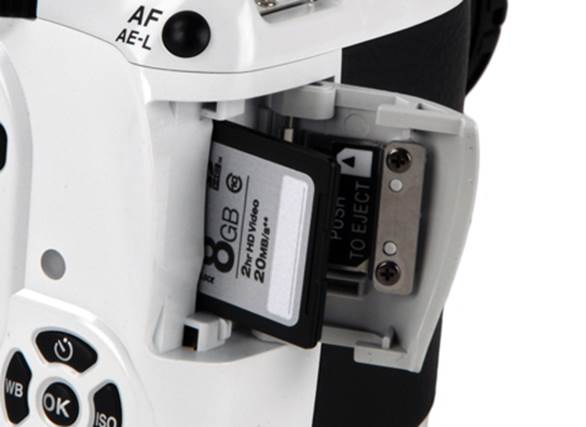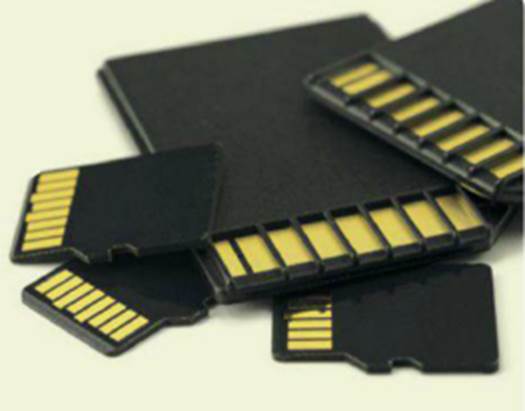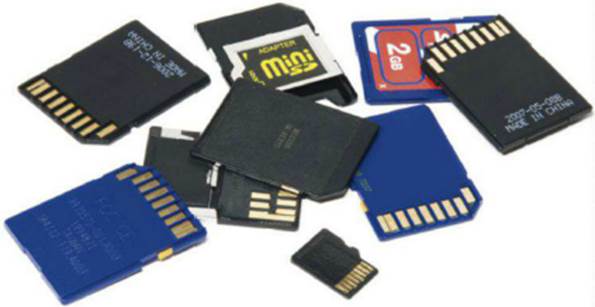If you camera produces 16MB image files, a
slow SD card will clearly be a drag. A class 2 model will take eight seconds to
record a single image. Even a fast 30MB/sec SD card will still take a good half
a second to store each photo.
Happily, this needn’t mean always waiting
half a second between consecutive photographs. Camera manufacturers understand
that when an unexpected photo opportunity arises, there’s a good chance you’ll
want to capture as many exposures as possible.

Every
digital camera has a buffer of every fast dynamic memory
For this reason, every digital camera has a
buffer of every fast dynamic memory, in which pictures are initially stored
when you press the shutter before being written to the SD card at whichever
speed the card support. This means that even if you have a slow SD card, you
can snap freely until the buffer fills up. Once it does, however, you won’t be
able to shoot again until the camera frees up some space by moving images onto
the SD card. The size of the buffer varies from camera to camera, but the
principle is the same for all models.
The speed of your SD card, therefore,
doesn’t affect how quickly you can fire off two photos. It comes into play only
after you’ve shot sufficient images, in a short enough space of time, to fill
the camera’s memory buffer.
You can confirm this by putting your camera
into continuous drive mode and holding down the shutter so that it fires off a
string of exposures. You’ll probably find that the first few shots trigger in
quick-fire succession, but then the rate slows down, as the camera can now only
take additional exposures as quickly as it can write images to the SD card.
SD flavours
When you’re shopping for a new SD card,
you’ll probably see multiple sizes on offer – the regular size, measuring 24 x
32mm, plus microSD models measuring only 11 x 15mm. You may possibly also spot
the odd miniSD card, measuring 20 x 21.5mm, although this format is
comparatively rare.

As
larger capacities became commonplace, new standards were needed
These smaller cards are intended for use in
small devices, such as smartphones, but with the right adapter – which is
sometimes provided free in the packaging – you can use one in a full-sized SD
slot. The adapter is simply a plastic sleeve with contacts; electronically, all
three formats are identical.
You may also notice that some cards are
described specifically as SDHC or SDXC media. This is because the original SD
standard, devised in 1999, only set out electronic specifications for cards
with capacities up to 2GB. As larger capacities became commonplace, new
standards were needed. SDHC, introduced in 2005, raised the maximum capacity to
32GB; in 2009, SDXC raised the limit further to 2TB.
Happily, the later standards maintain
backwards compatibility with the earlier ones, so a device that supports SDXC
will also work with SDHC and SD cards. As such, there’s no need to worry about
which type of card you buy – unless you plan to use a very large card with
hardware over three years old, which may predate the SDXC standard.
As you’d expect, the HC and XC standards
apply to small-format cards just as they do to full-sized ones, so
high-capacity microSD cards are referred to as microSDHC and microSDXC media.
In case it isn’t obvious, the HC and XC
suffixes stand for “high capacity” and “extended capacity”. But do you know
what “SD” stands for? It’s short for “Secure Digital” media – a reference to
the fact that the format has a built-in DRM system. This can be used to “lock”
files on the card so that they can only be accessed with a specific key –
making it possible, for example, to distribute movies and music on an SD card,
which can be played by an authorized player.
In practice, though, SD has never been
widely used as a distribution medium in this way, having instead established
itself as a way of storing your own personal data.
Measuring the difference
“Even a fast 30MB/sec SD card will
still take a good half a second to store each photo”
We can easily test the read and write
speeds of an SD card by connecting it to a PC via a USB card reader and running
our standard storage benchmarks, which time how long it takes to copy files to
and from a drive in Windows.
However, this test doesn’t accurately
represent how SD cards are really used in cameras. For a start, our large-file
test uses a huge 1.5GB data file, while the small-file test uses thousands of
100KB files. A card’s performance with files of such vastly different sizes
doesn’t necessarily tell us how it will handle raw and JPEG photographs, which
are closer to 16MB and 2MB in size respectively.

We
can easily test the read and write speeds of an SD card by connecting it to a
PC via a USB card reader and running our standard storage benchmarks
Second, the camera’s firmware may well
write files to the SD card in a different way to Windows. Clearly, a camera
will have less memory available than a full-fat Windows PC, and fewer resources
for multitasking, so it’s likely to be less efficient at moving data onto a
memory card than a PC. In short, knowing how a card performs in Windows doesn’t
necessarily tell you how it will fare when it comes to shooting.
To get a meaningful measure of the
differences between SD cards, we therefore loaded a variety of cards into a
DSLR and observed exactly how rapidly each one enabled the camera to shoot JPEG
in continuous drive mode. (One of the cards was a microSD card used in an
adapter). We then switched to raw mode and repeated the test. The camera we used
was a Sony SLT-A77, which produces raw files of approximately 24MB and JPEGs of
around 5MB with standard settings. If your camera produces smaller files then
you can expect a faster turnaround, but the relation between cards should
remain the same.